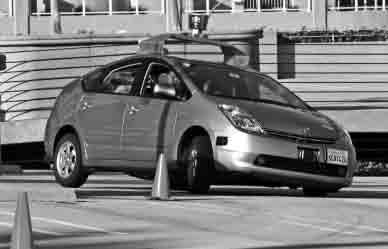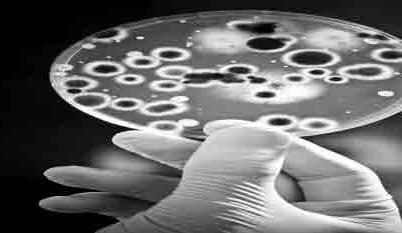
4 minute read
Green
from Feb. 16, 2012
Reno is keeping the lights on
The Reno City Council voted unanimously to postpone the appeal against digital billboards at an appeal meeting on Feb. 8 (“Bright blights,” Feb. 9). Scenic Nevada, the organization who filed the appeal, urged the Council to continue forward with a hearing, but a community workshop was scheduled instead that will allow for public comment. The appeal will be back on the calendar after the workshop, for which no date has been set yet.
Advertisement
Nevada representatives get schooled
The League of Conservation Voters released their congressional scorecard for 2011, which scores state representatives based on their support for environmentally-supportive Congress. Scores for Nevada’s legislators were a mixed bag.
Republican scores were low, to say the least: Sen. John Ensign and Rep. Mark Amodei scored a zero, Rep. Joe Heck received a 9 percent, and Sen. Dean Heller was given an 11 percent.
Democrats scored significantly higher: Rep. Shelley Berkley’s 94 percent is 2 percent higher than her 2010 score, and Sen. Harry Reid sits at a solid 100 percent.
View the scorecard at www.lcv.org/.
This tastes like plastic
Researchers at Yale University have discovered a fungus called Pestalotiopsis microspore that can eat plastic, with the hopes that it will help break down the amount of plastic in landfills. The fungus comes from the Amazon rainforest and eats polyurethane, the plastic that has stumped scientists who have been working on decomposing the stubborn material.
By extracting the enzyme from the fungus, the Yale researchers plan to harness its decomposition properties to bioremediate—use microorganisms to rid the environment of pollutants.
In an air-less environment, the fungus can grow larger, and the Yale researchers envision cultivating it in a controlled environment to consume landfill buildup. But some are concerned that it could eventually eat through any materials used to contain it. —Ashley Hennefer
ashleyh@newsreview.com

ECO-EVENT
The Sierra Nevada Alliance hosts the seventh annual Wild & Scenic Environmental Film Festival on March 9. The festival will feature environmental and adventure films to inspire community action. Doors open at 6 p.m. and the festival begins at 7 p.m. Tickets will be available soon. Montbleu Showroom, South Lake Tahoe. For more information, contact Lynn Baumgartner at lynn@sierranevadaalliance.org or visit www.sierranevadaalliance.org.
Got an eco-event? Contact ashleyh@newsreview.com. Find more at the Green with NV blog, www.newsreview.com/greenwithnv, and on Facebook atfacebook.com/rnrgreen.

PHOTO/GOOGLE MEDIA ROOM
Google has been testing autonomous technology on the Toyota Prius. Volkswagen has also made test models.
More than meets the eye
Autonomous vehicles
Well, it’s official—we live in the future. Or at least, the future as envisioned by science fiction artists and writers who made us yearn for hovercrafts or by Ashley homes on other planets is becoming a reality. Technology isn’t quite there yet, but Nevada’s roadways may soon change if autonomous vehicles—self-
Hennefer driving, or driverless, cars—become more common. Anew state law defines autonomous vehicles as“a motor vehicle that ashleyh@ newsreview.com uses artificial intelligence, sensors and global positioning system coordinates to drive itself without the active intervention of a human operator.” The law was enacted in 2011. Driverless cars have been in experimental stages since the 1980s and some commercial cars, like the Ford Fiesta, already have autonomous features—the Fiesta can parallel park by itself. But making them a mainstream option is a project spearheaded by Google, which has been modifying the Toyota Prius hybrid to navigate on the highways and testing it on roads in California. Last year, the Huffington Post reported that Nevada could be the first state to have autonomous vehicles on its roads by March 2012 when the law takes effect, but seeing them as early as next month seems unlikely. The cars aren’t even commercially available for the public. In any case, Nevada is the first state to write law to allow autonomous vehicles to be used on the road, and the Department of Motor Vehicles requires owners of autonomous vehicles to have a specific type of driver’s license. Several states including Florida and Hawaii are following Nevada’s lead. “We just want to be the ones to break this technology here in Nevada,” says Scott Magruder, spokesperson for the Nevada Department of Transportation. “It’s something in the future, and we want to be ready, and we’re a state with long roads and low traffic so it’s a good place to test it.” Studies on driverless cars have suggested several environmental benefits, including fuel efficiency and reduced carbon emissions. By removing human error, like tapping the gas, idling, or driving around while lost, congestion would be reduced because cars could be regulated to maintain a certain speed and distance behind another vehicle. Autonomy would also prevent traffic accidents caused by intoxicated, tired or distracted drivers. Another benefit of driverless cars is more efficient transport of goods. West Trak in Dayton is already testing driverless trucks to collect data and determine how they can make trucks that can safely carry resources long distances. But autonomous transport vehicles won’t be around for a while. “People ask us, could you have a truck with like five trailers like a train?” Magruder says. “I think now we’re just trying to see how smaller projects work.” “AGVs [automatic guided vehicles] are attractive because they provide labor savings, efficiency, and they reduce damage to transported materials,” states a report by the Institute of Electrical and Electronics Engineer. Although the Google car has logged more than 1 million accident-free miles, consumers are concerned about a driverless car’s ability to respond to uncertain situations like pedestrians, sudden stops by other vehicles, or road work. And while autonomous cars could help individual drivers get around more efficiently and safer, some environmentalists argue that better infrastructure for public transportation options like a subway system should be the priority. Others insist that the only true eco-friendly modes of transportation are cycling and walking. Ω








